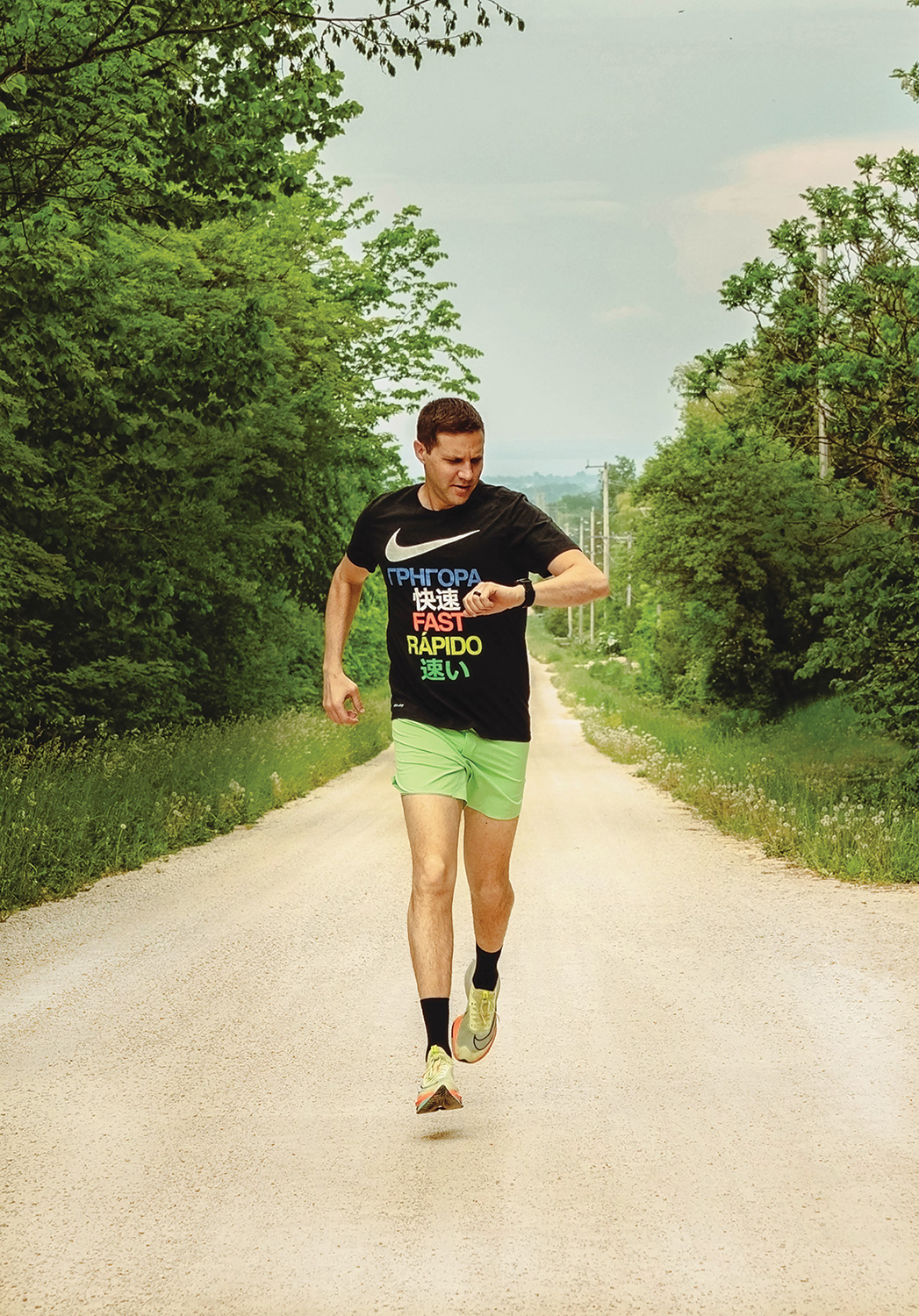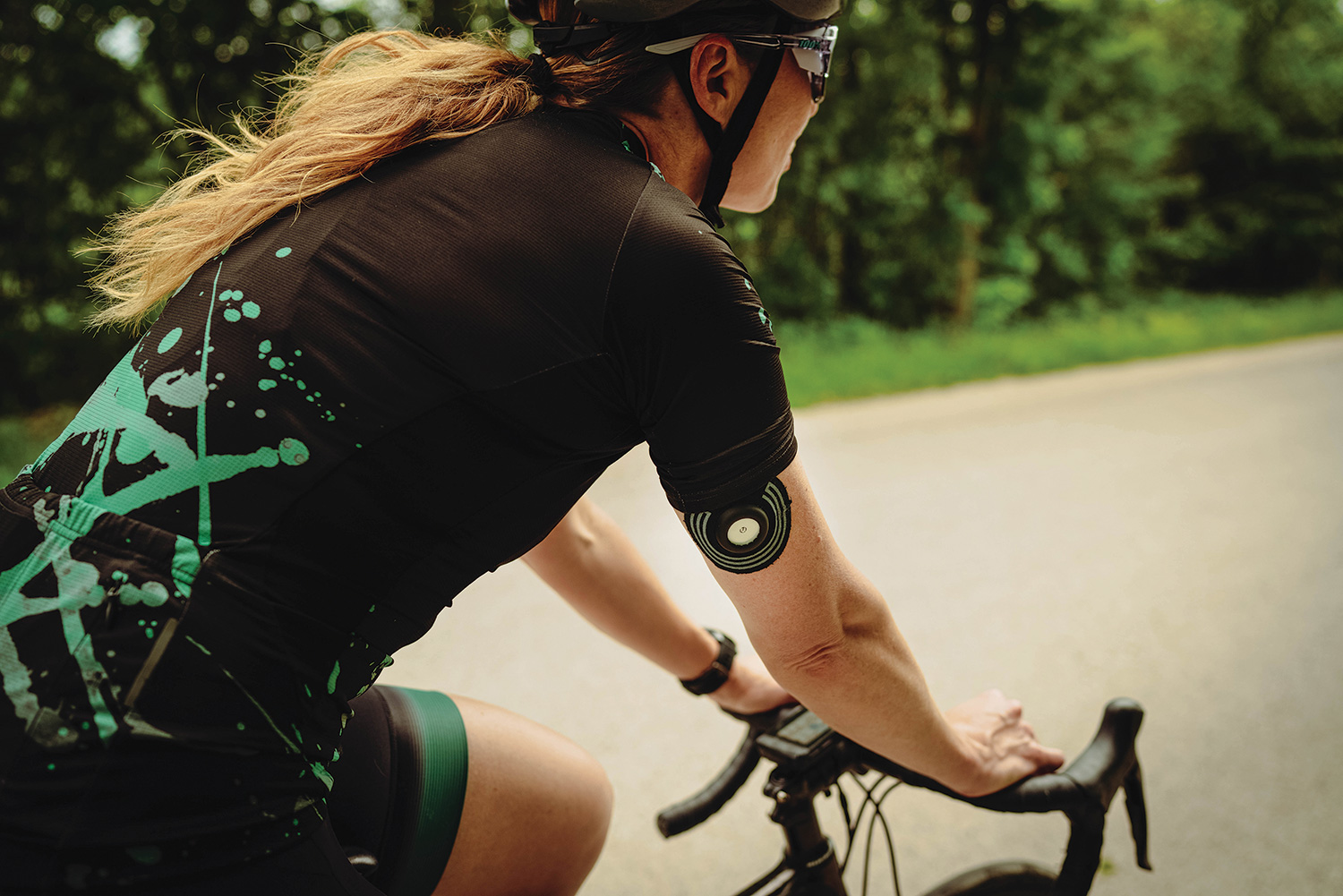Why, for better or worse, smartwatches and other wearable tech are becoming increasingly close to our hearts and minds.
By Jessica Wortsman // Photography by Anya Shor
Technologically, we live in a strange and exciting time. We’ve got self-driving cars, virtual assistants, personalized advertising and microprocessors so small they can be mounted on a tooth. As technology has continued to get smaller and thinner, it’s become more portable than ever. In fact, wearable technology (or wearables) is the fastest-growing tech market.
What exactly is wearable technology? Well, that smartwatch on your wrist is one example; but more broadly, wearables are a category of electronic devices worn by users to track and analyze data or to provide information or connectivity. Some are paired with accompanying apps that provide the user with data and feedback. These gadgets come in many forms—headsets, rings and watches being the most common—but can also be embedded in clothing or the skin.
The rise of the fitness wearable can be traced back to the humble clip-on step-counter of the mid ‘90s. Those little plastic gizmos were so popular you could even find one at the bottom of your box of Special K, and getting in 10,000 daily steps became a goal for some (an obsession for others). But the launch of Fitbit in 2009 really sparked the fitness tracking trend, and the appeal of quantifying our every movement for the purpose of self-improvement has only grown stronger since.
Nowadays, fitness wearables have become much more sophisticated. These babies monitor biometrics like heart rate, blood oxygen level, sleep patterns, menstrual cycle and body temperature. While not yet able to actually diagnose, they can alert us to potential critical health issues, such as sleep disorders, irregular heartbeat and even pregnancy.
The appeal of wearables is broad. You’re as likely to see a smartwatch strapped to the wrist of a high-performing athlete as you are a retiree out on the golf course. It’s a booming market, with an estimated one billion wearable devices in use worldwide.

Glenn Wark is a sports physiotherapist, founder of Peak to Shore Physiotherapy and Sports Medicine and an avid triathlete, who uses wearable tech to help assess and treat his patients.
“Your body can tell you so much, you just have to listen.”
—Hannah Parish, mountain biker and wearable tech enthusiast


Hannah Parish is a passionate cyclist. She feels wearable tech has the ability to help us live longer and better. She wears a continuous glucose monitor, which offers real-time feedback about sports nutrition.
Collingwood resident Hannah Parish is one of those users. Parish has spent the last 25 years riding and racing mountain bikes and is deeply involved in local trail and cycling associations. Wearable technology is something of a passion for Parish, who is a self-professed techie and would-be biohacker, given the time. She has tried a number of fitness wearables over the years, from most incarnations of smartwatches to newer-fangled devices like metabolic breath testing and continuous glucose monitors.
Currently, she’s deep into sleep tracking. During the pandemic, Parish wanted a way to manage her increased stress and so she bought an Oura Ring. The device, worn on the finger like a ring, uses sensors to track a number of the wearer’s health metrics, most notably sleep. It’s backed by a solid accuracy rate as well as a devoted cast of A-list celebrities. Parish used the ring’s data and feedback to get more rest and feel more alert and ended up loving the product so much, she now works for the company.
As Parish explains, it gave her insight into the mechanics of her body in a way she had never had access to before. And for her, understanding what’s happening in her body is all about staying healthier longer.
“It’s not just about what’s going on in your head but about what’s going on in your whole body because you are a connected system.”
Healthcare Applications
Adoption of technological innovation is notoriously slow in the healthcare sector for a number of reasons including strict regulations, patient privacy and cost, but the COVID-19 pandemic gave wearables a push into the spotlight as a way to deal with such issues as overcrowding and worker burnout. Because wearables allow patients to be monitored remotely, they help reduce hospital visits, wait times and patient exposure to sickness. They also provide doctors with access to real-time, continuous data about their patients, which means issues are caught earlier.
Wearables now straddle the blurred line between the healthcare and wellness industries. From heart rate monitors to continuous glucose monitors, the same device often services different types of users. For example, a heart rate monitor might be used by fitness enthusiasts to keep their workouts at optimal intensity and to assess their recovery, while a medical professional might use one with concussion patients, whose heart rate variability is often affected, to assess their healing progress.

Sarah Applegarth, exercise physiologist and co-owner of Active Life Conditioning, feels technology can never replace the energy and expertise of a live coach.

This is something local sports physiotherapist Glenn Wark of Peak to Shore Physiotherapy and Sports Medicine has done with some of his head injury patients. Wark, who treats high-performance athletes through Alpine Canada and Sport Canada, along with a roster of regular patients at his clinic, often uses wearable technology to help both assess and prevent injury. He says the metrics provided by these devices can prove the difference between patients saying they feel better and them actually, physiologically, being better.
“I think these devices can help guide,” he says; however, “This information needs to be clinically interpreted because it can be challenging for the average person to decipher. It’s information overload.” He points to our local sports medicine doctors, exercise physiologists, physiotherapists and athletic coaches as excellent resources.
One such resource is Sarah Applegarth, owner of Active Life Conditioning and an exercise physiologist. She says most of her clients under age 50 use some type of fitness tracker.
Applegarth uses an Apple smartwatch mainly to help with sleep. Her early schedule at the gym often leaves her struggling to get enough hours of rest and she’s found the watch’s reminders and tips helpful with that.
She says, even just the recognition that she is in sleep deficit helps her to prioritize it, whether by going to bed earlier or taking a nap. “Awareness is sometimes the biggest benefit.”
Supporting Mental Health
Wearables have their place in the mental health sector too. Fitness trackers can encourage activity and good sleep, which we know help improve both physical and mental wellbeing, but there are a number of new wearables that cater specifically to those seeking treatments, rather than just tracking. These devices, such as the Apollo Neuro, Muse and Lief, centre mainly around stress relief, muscle recovery and improved sleep.
The Apollo Neuro, for example, works on the nervous system through sound wave vibrations. Users can select from a number of pre-programmed settings for improved focus, sleep, stress relief and more. Created by a neuroscientist, the device has been tested in numerous clinical trials with favourable results.
It’s this research that convinced Toronto psychotherapist Elisse Peltz to give it a try. Peltz has been using the Apollo Neuro for over four months and has seen improvement to her focus, sleep and stress level. These metrics can be hard to measure but as a mind/body-focused therapist and certified yoga instructor, Peltz is uniquely qualified to assess the subtle shifts in both her psychological and physical wellbeing. In fact, she’s even begun recommending the device to some clients.
“There are a lot of tools that I recommend, and this is a new tool in the toolbox.” She says the device is not a silver bullet, but possibly helpful for those dealing with emotional dysregulation, especially when medication isn’t an option.
Peltz has also begun using an Oura Ring to help her better understand her sleep patterns and encourage stress reduction, and says she’s enjoying the insight it gives her into what’s happening in her body.
“It’s one thing to think it, it’s another thing to know it,” she says. “Wearable technology gives us a sense of knowing that we haven’t had before.”
“For me, if there’s always that target, that goal, a specific number, you can lose the fun of it.”
—Sean Bechtel, co-owner of VO2 Sports and former professional triathlete
Not Without Drawbacks
Sean Bechtel, athletic coach and co-owner of VO2 Sports in Collingwood, is a former professional triathlete who came up before digital tracking was the norm. He says he has a love/hate relationship with wearables and has no interest in deep diving on the metrics.
“It’s endless. How much do you want to measure?” he says, though he recognizes the benefit for professional athletes.
Bechtel does use a smartwatch to keep an eye on his heart rate, a metric he feels is useful, but prefers to stay focused on the main reason he likes to get out there and move—for the fun of it.
“You can get so caught up in hitting targets, in terms of heart rate, wattages on the bike, speeds on the run, that you can forget to just get out and do it. People forget that it’s kind of for fun.”
Wark agrees and says he’s seen people so caught up in the data that they lose the whole social element of being active. “Some people stop running with certain friends because they’re not running in their training zone anymore.”
He also points out another downside. “We’re human beings and we need to disconnect sometimes from the overload of information we get 24/7.”
Applegarth feels the same. “They don’t allow people to unplug. We are taking in so much information all the time that we don’t have an opportunity to downregulate and be with our thoughts.”
Bechtel also feels wearable technology is hurting the athletic coaching industry. He finds athletes are turning to their tracking gadgets for the information they once needed to pay a coach to collect and analyze. As a result, he sees this industry leaning in the direction of life coaching, becoming more about providing motivation and support than training plans.
Applegarth doesn’t agree and says wearables can never replace the expertise of a live coach. “I’ve been doing this for 25 years and the need for connection, feedback and accountability is greater than ever.” Many of her clients also want to avoid getting hurt, she says, and a wearable device can’t prevent that.
There are other limitations too. Accuracy is still a challenge and varies across brands and users. There’s also the issue of data privacy. These devices collect and store a lot of very personal information. How and if this information is shared is a real concern. And finally, there’s the cost. Wearables are pricey, but for many, Parish included, they’re a worthy investment in their own health.
The Future is Wired
We’re only at the tip of the wearable tech iceberg. Soon your smartwatch will harvest the energy from your movement to recharge its own battery, and your clothing will guide you like a GPS via embedded haptic technology. Imagine a smart tattoo that connects to your mobile device, headphones with a personal air purifier, or a vibration belt that prevents bone loss for osteoporosis patients. Many of these devices are still in their infancy, but the future of technology is moving evermore toward integration and, whatever our opinions on that, we’re all going to have to learn to become one with wearables. Of course, we may just all be living in the metaverse by then.

Sean Bechtel, coach and co-owner of VO2 Sports, emphasizes fun over metrics.











